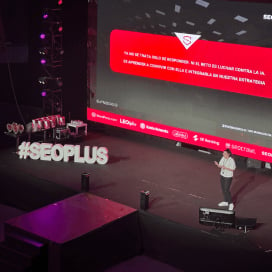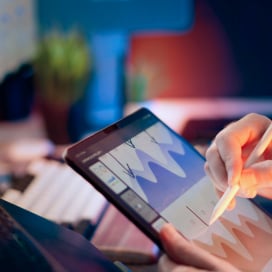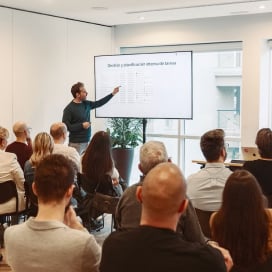Written by Fernando Maciá
José Luis Pulpón (Google)
The second digital revolution. 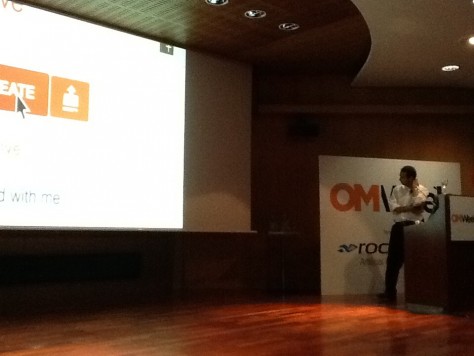
As everything can be measured, there is more and more data. What does the consumer do? There are good and bad practices. What doctors hate about their patients is that they have documented on the Internet what is wrong with them.
It is true that we share, that we trust, social recommendation, online reviews and that is why the community increasingly influences commerce. This opens up real business opportunities.
Show a video of collaborative work. Indeed, we are connected to the network and in 2016 there will be 5 billion screens connected to the Internet with all kinds of devices and screen formats: phones, smartphones, tablets, notebooks, laptops, desktops, smart TVs…
ChromeCast will be able to display on screen what we have on any device similar to what AppleTV does, taking advantage of the interaction of the different screens.
This is all part of Google’s ongoing innovation initiatives. It shows a video of the Loon project: bringing Internet to all places through balloons that distribute connectivity to areas where there is no coverage. It is done in partnership with local operators and its position is managed with air currents and software.
More such projects will appear throughout the coming year from Google X.
The barometer and green shoots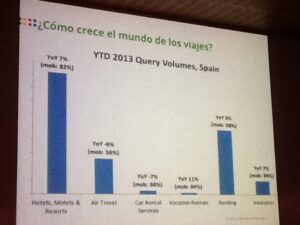
There is clearly an opportunity in mobile that only a few are taking advantage of, but it is clearly already a reality in the present. The category with the highest sales volume is travel, followed by banking and insurance. In other sectors, we see apparel dominating, followed by home appliances, home and garden or telecom.
In the communications sector, mobile searches are growing 100% year-on-year.
In search, the business possibilities are many. A search engine is like a supermarket shelf. It is a very powerful platform that allows us to reach from several points to impact the user we are interested in: organic, AdWords, display, remarketing…
From ROPO to MOSTO (Research online, purchase offline). Mobile as a great source of traffic to physical stores. MOSTO: mobile to store. We know that digital has an influence on the store, even on the PC.
This is a multichannel world. An increasing percentage of purchases are coming from mobile terminals. mCommerce and also the cross device effect: users who continue their research for their purchase decision from one terminal to another. In each industry and brand this composition is different. We also have the ability to receive and serve people from the smartphone taking users who cannot complete the transaction on the mobile to call centers, call me back, etc. to help them close the transaction.
We know the impact, through coupons, geographic measurement, etc., the effect on the physical sale that comes from the online action.
There are changes in the search engine absolutely every day. No engineer fully knows all the evolution, but SERPs are evolving very fast.
Some innovations: ad formats that help generate leads, with ads that incorporate text boxes for completion. Ads that incorporate social recommendations from our circle of contacts or authority sources. Image extensions, increasingly visual formats, including video (100 hours of video are uploaded to YouTube every minute).
New metrics to understand the full value of mobile with which we can measure cross-device conversions that we had not considered until now. This way we will be able to understand all multi-device conversions and even in-store sales. To follow the entire on and offline conversion funnel.
We will have a lot of data and we will need more technology to apply criteria, understand the user and adjust our offer and promotion.
Google Glass is coming next year with the next multi-screen era.
